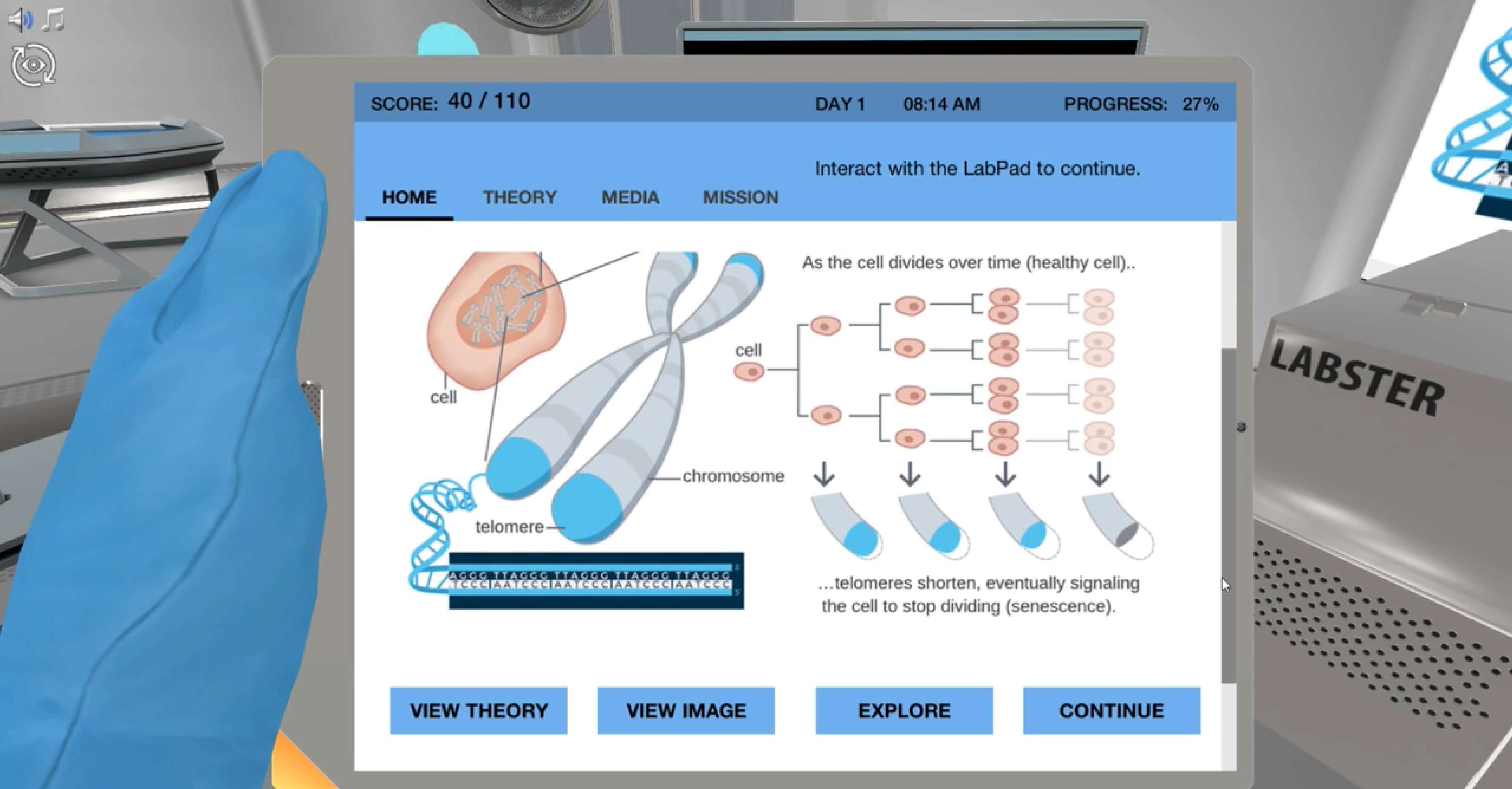Heading 1
Heading 2
Heading 3
Heading 4
Heading 5
Heading 6
Lorem ipsum dolor sit amet, consectetur adipiscing elit, sed do eiusmod tempor incididunt ut labore et dolore magna aliqua. Ut enim ad minim veniam, quis nostrud exercitation ullamco laboris nisi ut aliquip ex ea commodo consequat. Duis aute irure dolor in reprehenderit in voluptate velit esse cillum dolore eu fugiat nulla pariatur.
Block quote
Ordered list
- Item 1
- Item 2
- Item 3
Unordered list
- Item A
- Item B
- Item C
Bold text
Emphasis
Superscript
Subscript
About This Simulation
Follow Lily’s quest for planning a healthy diet for her best friend, Mia, who is lacking energy for her athletic performances, and learn how an unhealthy diet can impact DNA stability by measuring telomere length and DNA adducts from human samples.
Learning Objectives
- Describe nutrient compositions of healthy and unhealthy diets
- Explain how genomic instability may lead to the development of diseases such as cancer
- Summarize the impact of diet on genomic stability
About This Simulation
Lab Techniques
- Histology slide preparation
- Micropipetting
- Microscopy
- Diet planning
- Flow cytometry
Related Standards
- No direct alignment
- No direct alignment
- 7.2 Transcription and gene expression
Learn More About This Simulation
Everything you eat will impact your DNA. In this simulation, you will learn about the connection between nutrients in your diet and the stability of your DNA.
Food composition and digestion
Join two students and discover how their contrasting food choices impact them. You will review their food choices by looking at the nutrients’ 3D structures and compositions. Next, you will dive deeper into the human digestive system. Through detailed 3D animations, you’ll get the opportunity to travel through the gut with the bacteria and see how nutrients are absorbed in the human body.
DNA experiments
You will perform two experiments to uncover how nutrients impact the DNA structure. In these experiments, you will compare samples taken from people with healthy and unhealthy diets. In the first experiment, you will measure the DNA telomere length. In the second experiment, you will measure the DNA adduct level from colon samples.
Plan a healthy meal
Finally, you will use your acquired knowledge to plan a healthy meal for Mia, who is a school athlete. You can choose from a range of different food options to build your meal plan. Will you be able to help Mia get her energy back?
Boost STEM Pass Rates
Boost Learning with Fun
75% of students show high engagement and improved grades with Labster
Discover Simulations That Match Your Syllabus
Easily bolster your learning objectives with relevant, interactive content
Place Students in the Shoes of Real Scientists
Practice a lab procedure or visualize theory through narrative-driven scenarios


For Science Programs Providing a Learning Advantage
FAQs
Find answers to frequently asked questions.
Heading 1
Heading 2
Heading 3
Heading 4
Heading 5
Heading 6
Lorem ipsum dolor sit amet, consectetur adipiscing elit, sed do eiusmod tempor incididunt ut labore et dolore magna aliqua. Ut enim ad minim veniam, quis nostrud exercitation ullamco laboris nisi ut aliquip ex ea commodo consequat. Duis aute irure dolor in reprehenderit in voluptate velit esse cillum dolore eu fugiat nulla pariatur.
Block quote
Ordered list
- Item 1
- Item 2
- Item 3
Unordered list
- Item A
- Item B
- Item C
Bold text
Emphasis
Superscript
Subscript
Labster can be integrated within a school's LMS (Learning Management System), and students can access it like any other assignment in their LMS. If your Institution does not choose an LMS integration, students will log in to Labster's Course Manager once they have an account created. Your institution will decide the access method during the sales process.
Labster is available for purchase by instructors, faculty, and administrators at education institutions. Purchasing our starter package, Labster Explorer, can be done using a credit card if you are located in the USA, Canada, or Mexico. If you are outside of North America or are choosing a higher plan, please speak with a Labster sales representative. Compare plans.
Labster simulations are created by real scientists and designed with unparalleled interactivity. Unlike point and click competitors, Labster simulations immerse students and encourage mastery through active learning.
Labster supports a wide range of courses at the high school and university level across fields in biology, chemistry and physics. Some simulations mimic lab procedures with high fidelity to train foundational skills, while others are meant to bring theory to life through interactive scenarios.


















